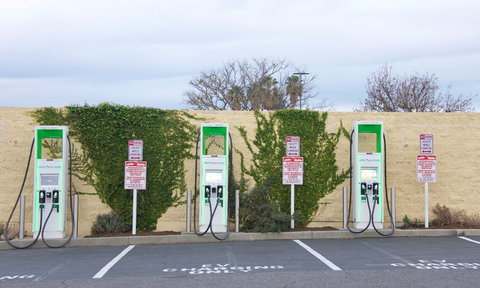Chaz Andrews Doepke Technical Manager – Discuses RCD circuit protection associated with Mode 4 charging equipment.

If you are involved in regular installation of DC EV chargers, you will already be familiar with the significant differences between individual manufacturers performance characteristics and the impact on the supply side equipment e.g. transient inrush current, harmonic distortion, leakage current and associated RCD selection.
Mode 4 Guidance
It is not possible to give standardised recommendations for RCDs associated with Mode 4 chargers – Why?
Whilst there has been agreement for Mode 3 charging standards in Europe, with the publication of ENIEC 61851-1 2017, and the associated changes in section 722 BS7671. That is not the case with Mode 4 charging standards which are still coalescing. DC charger design is far more complex due to the safety issues associated with high DC voltage /current. This is reflected in the time taken to agree a revision of BSENIEC61851-23 2014 – the current designated standard for DC charging, quoted in BS7671. For example, this early standard gives general design requirements but is light on standardised test methods for checking conformity. This results in a wide variation in basic standardised performance characteristics between individual manufactures, claiming compliance with a designated standard.
Which standard?
The current edition of BS7671 (Oct 24) Clause 722.531.3.101 relating to RCD selection Note 2 states that; supplies using DC vehicle connectors to the BS EN 62196 series are under consideration.
Electrical safety design characteristics (the guts of the charger) may be dependent on the DC interface charging technology adopted by the Vehicle Manufacturer e.g. CHAdeMO (Japanese), GB/T (China), CCS 1 & 2 (North America & Europe), and Tesla (proprietary design NACS - based on North American standards). Later versions of Tesla DC chargers were supplied with CSS2 interface (compatibility with European EVs), but still NA electrical design standards.
Use the basic principles of BS6761 (clause 133.1, 134.1.1 and 531.3.3) to select appropriate RCDs, based on the individual charge point manufacturer’s characteristics and installation recommendations e.g. note minimum RCD characteristic requirements at the quotation stage*
* Clause 642 (Inspection): Refer to as an aid-memoire during installation planning / equipment verification.
Mode 4 chargers – General points
RCDs installed on the AC supply feeding the charger, do not provide protection on the DC side of the charger. Electric shock and fault protection on the DC side is the responsibility of the chargepoint manufacturer: Conformity with the essential safety requirements is indicated by CE/UKCA Marking – see Clause 642. Refer to the chargepoint manufacturer’s installation instructions.
Inrush / Transient currents
Depending on the design and technology employed, equipment containing high power rectifiers / inverters can produce significant transients during operation. Check with the equipment manufacturer - RCDs may require transient resistant features, to prevent unwanted tripping and unnecessary equipment downtime.
AC leakage current
This is the current that flows to earth during normal operation. Leakage current values are specific to the manufacturer’s design and will vary as a function of the individual chargepoint harmonics, produced during various stages of charging and the supply quality (existing harmonic content). The existing standard BSENIEC61851-23 sets minimum protective conductor requirements for Class 1 equipment, where touch currents exceed 3.5mA. Follow the manufacturer’s recommendations if they exceed the requirements of BS7671 543.1 - 543.7.
Unexplained RCD tripping may be the result of insufficient safety margin between the operational leakage current and the RCD sensitivity - see 531.3.2 (ii), or incorrect RCD selection i.e. RCD used outside of its design range (explained below) – see 531.3.3
Safety / departure from BS7671
Type A RCDs are calibrated / designed to detect leakage currents at the supply frequency f .The equipment contained in the DC charger produces leakage currents at frequencies >> f. Leakage currents generated at higher frequencies change the RCD tripping characteristics. In this case, clause 133.1.3 applies and the designer must verify that the RCD provides the same degree of safety as clause 133.1.1. i.e. obtain information from the manufacture confirming, that the RCD will still function reliably when subjected to high frequency leakage currents. Note the wording in clause 133.1.3 “Such use shall be recorded on the appropriate electrical certification specified in Part 6”.
Until recommendations are included in BS7671-722, unless otherwise stated in the chargepoint manufacturer’s installation instructions, only Type B RCDs (RCCB,RCBO, CBR) should be used upstream of Mode 4 chargepoints – reference 531.3.3 (iv).
Conclusion
With any innovative technology the “State of the Art” is an important concept to consider in relation to the existing requirements of BS7671 and installation advice provided by the Equipment Manufacturer. Ask before acting and keep in mind the requirements of clause 133.1.1 – 3, 134.1.1, and 531.3.2 – 3.
Chaz Andrews – Technical Manager, Doepke UK Ltd
